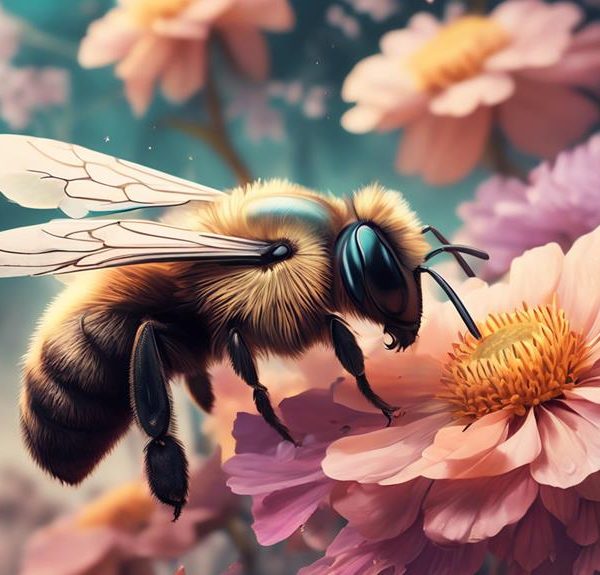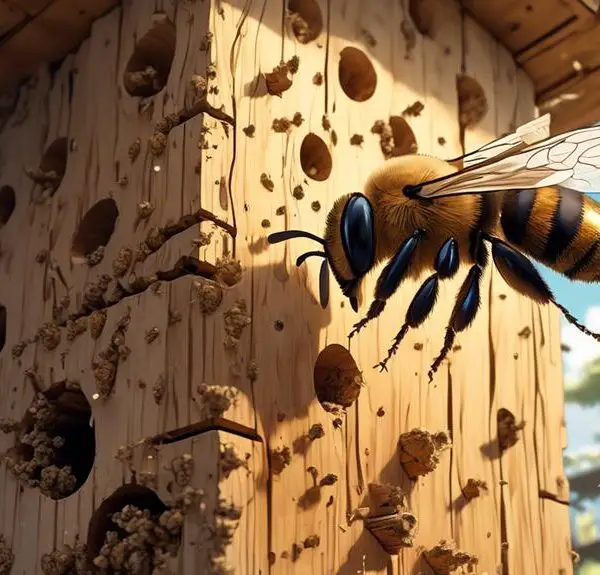Are Mason Bees poisonous? Unravel the truth about these vibrant, misunderstood pollinators in this intriguing exploration of their world.

Are Mason Bees Poisonous?
You might not be aware, but mason bees, often mistaken as flies due to their metallic blue or greenish hue, play a pivotal role in our ecosystem. They're exceptional pollinators, in fact, more efficient than honey bees.
Now, you might be wondering, if these buzzing creatures can sting or are poisonous. Well, there's more to these industrious insects than meets the eye. As we peel back the layers of their fascinating world, you'll uncover some surprising facts that may change your opinion on these misunderstood creatures.
Why not stick around and find out?
Key Takeaways
- Mason bees are exceptional pollinators and more efficient than honey bees.
- Mason bees are small, non-aggressive solitary bees that nest in narrow crevices or hollow reeds.
- They use mud to create individual cells for their offspring.
- Mason bees are not dangerous and only sting when threatened, with their sting being much less painful than that of a honeybee.
Understanding Mason Bees

To fully grasp the nature of Mason bees, it's crucial to delve into their unique characteristics, behavior, and role in the ecosystem. They're small, non-aggressive solitary bees, distinguished by their metallic green-blue hue. Unlike honeybees or bumblebees, Mason bees don't live in colonies. Instead, you'll find them nesting in narrow crevices or hollow reeds, using mud to create individual cells for their offspring.
Now, you might wonder about their sting. Truth is, Mason bees do have the ability to sting, but they're relatively harmless. They'll only sting if they feel threatened or trapped. Even then, their sting is much less painful than that of other bees.
Their role in the ecosystem is vitally important. As prolific pollinators, they help plants reproduce, supporting biodiversity. Moreover, they're extremely efficient at pollinating fruit trees, making them beneficial for orchard owners.
Consider the fact that a single Mason bee can do the work of 100 honeybees. That's impressive, isn't it? Through their tireless efforts, they enhance our environment and contribute significantly to our food supply.
Understanding Mason bees helps you appreciate their vital role and dispel any unfounded fears.
Mason Bee Habitats and Lifecycle
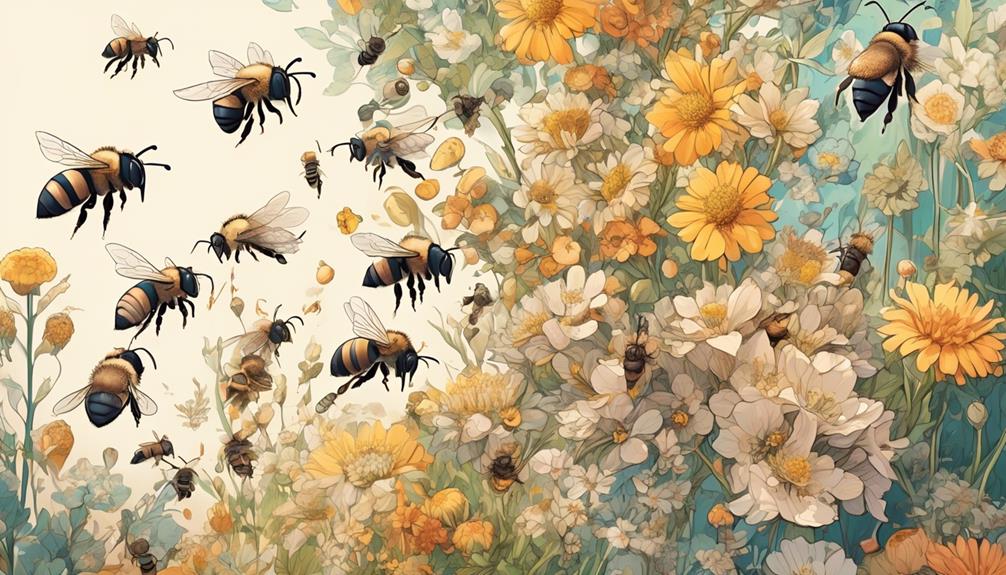
Now that you've gained an understanding of the general nature and role of Mason bees, let's explore their intriguing habitats and lifecycle.
Unlike honeybees, Mason bees are solitary creatures. They don't live in hives; instead, they nest in small, natural cavities like hollow stems or holes in wood, often created by beetles. They've also been known to occupy human-made structures, such as tubes in bee hotels. They don't produce honey or wax, so they use mud to construct their nests, hence their name.
Mason bees have a fascinating lifecycle too. In spring, adult females emerge, mate, and then search for suitable nesting sites. Once they've found one, they collect pollen and nectar to form a food ball in the nest. They then lay an egg on this food ball and seal the cell with mud.
This process is repeated until the nest is full. The adult bee dies soon after. The eggs hatch into larvae, consume the food ball, pupate, and then overwinter as adults inside the cocoon. They'll emerge the following spring to start the lifecycle over again.
Distinguishing Mason Bees From Other Bees
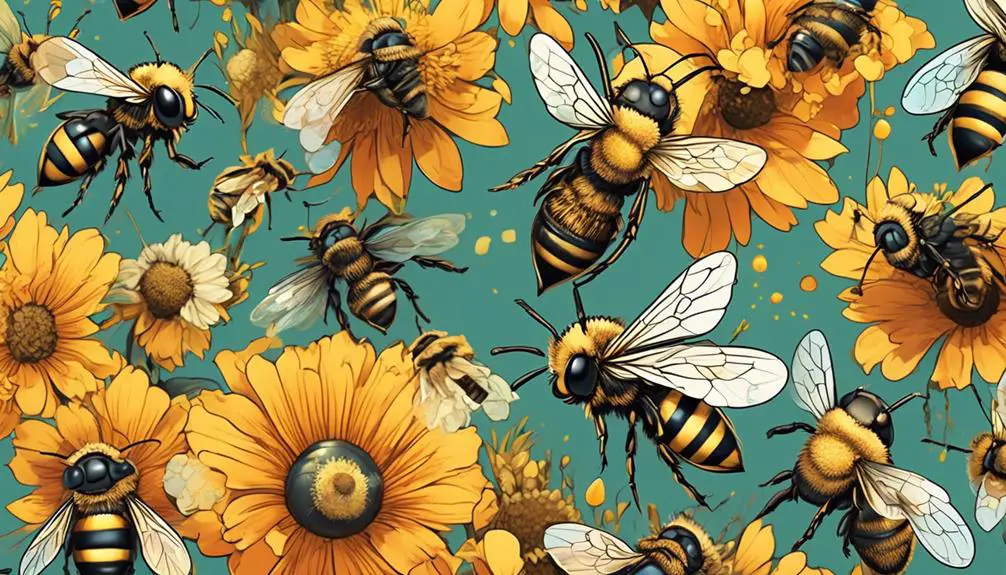
While you might struggle to differentiate between various types of bees at first glance, there are certain characteristics that set Mason bees apart. Unlike honeybees, Mason bees have a robust, metallic, blue-black body. They're smaller, about the size of a house fly, and don't have the distinctive yellow and black bands that you'd associate with a typical bee.
One unique trait is their solitary nature. Mason bees aren't social insects. They don't live in hives or colonies, but in individual nests. They're named 'Mason' because of their habit of using mud or clay to build and seal off their nests – a behavior that isn't found in many bee species.
You'll also notice a difference in their flight patterns. Mason bees typically fly in a straight, swift line, unlike honeybees, which tend to hover and zig-zag.
Their sting is also a distinguishing factor. While female Mason bees do possess a stinger, they're not aggressive and will only use it in self-defense. Moreover, their sting is mild and nowhere near as painful as a honeybee's sting.
Understanding these differences will help you identify Mason bees and appreciate their unique role in our ecosystem.
Are Mason Bees Dangerous?
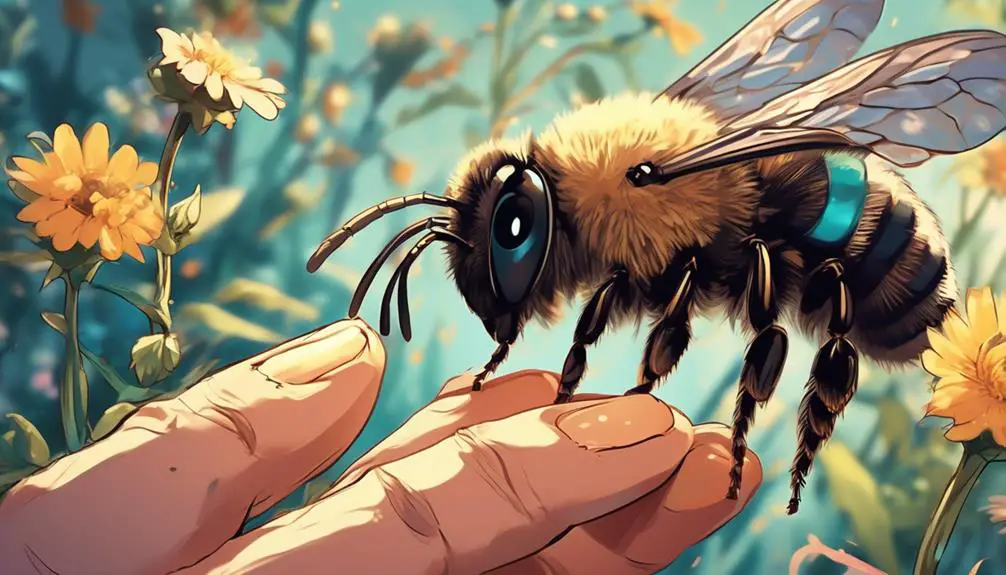
Despite their ability to sting, you shouldn't be overly concerned about Mason bees posing a threat to your safety. In fact, Mason bees are non-aggressive by nature, and they only sting when they're under extreme duress, such as when they're being squashed or handled roughly. Even if you were to be stung by a Mason bee, you'd find that their sting is much less painful than that of a honeybee.
Mason bees are solitary creatures, and they don't defend their nests in the way social bees do. This means they're less likely to swarm or attack in numbers. Furthermore, unlike honeybees or wasps, Mason bees can't sting repeatedly. They've a barbless stinger, allowing them only a single sting before they die.
In terms of allergic reactions, it's worth noting that they're extremely rare. Allergies to Mason bee stings are less common than those to honeybees or wasps. And even in the rare instances where an allergic reaction does occur, it's typically mild.
How to Coexist With Mason Bees

Understanding the habits and needs of Mason bees can foster a harmonious coexistence with these beneficial insects in your garden. These bees are solitary, meaning they don't live in hives like honeybees. Instead, they nest in small cavities such as hollow stems or holes in wood.
To encourage their presence, consider setting up a Mason bee house. It's simple to make, requiring only untreated wood and a drill. Drill holes of about 5/16 inch diameter and at least 3 inches deep. Position the house in a sunny, south-facing spot about 3 to 7 feet off the ground.
Remember that Mason bees need mud for nest-building. If you don't have a natural mud source, create a mud puddle nearby. Also, plant a variety of flowering plants to provide food. Avoid using pesticides which can harm the bees.
Handle these bees gently if you must, as they'll only sting if they're threatened. They're non-aggressive and their sting is mild, posing little risk to humans.
Conclusion
So, are mason bees poisonous? No, they're not. Despite their ability to sting, these non-aggressive bees rarely do so.
Their non-poisonous stings, coupled with their vital role in pollination, make them friends, not foes. Understanding their habitats, lifecycle, and characteristics helps us coexist harmoniously with them.
So, when you spot a mason bee, remember: they're not out to hurt you, they're just busy doing their crucial job for our ecosystem.

